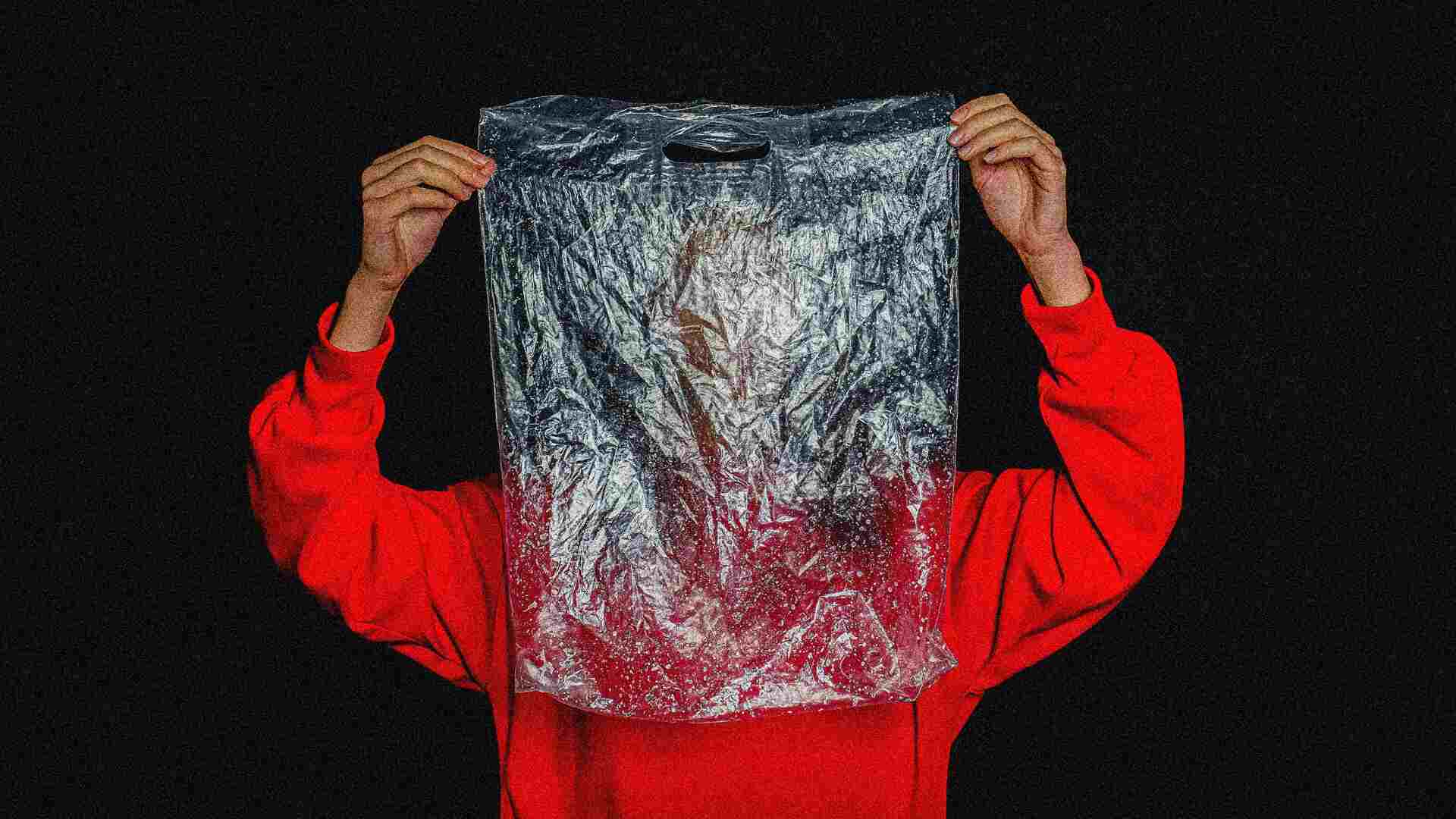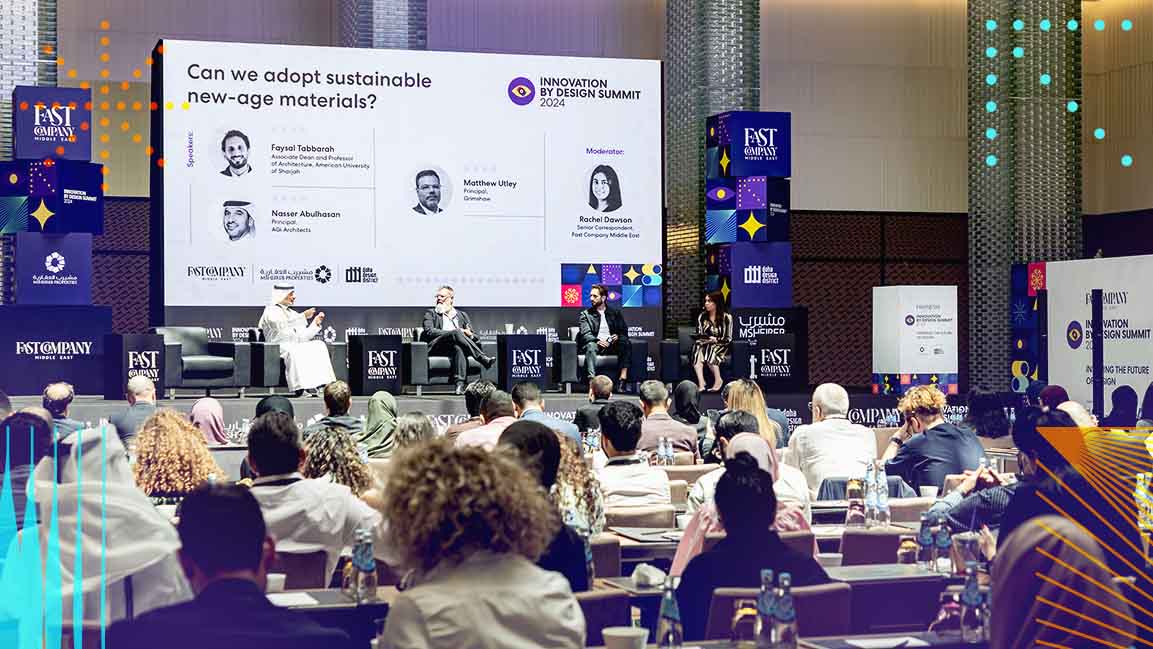- | 8:00 am
Why this startup is covering the ocean with wooden balls
The climate tech startup Running Tide has a unique approach to carbon removal that involves wood waste, seaweed, and the deep ocean.
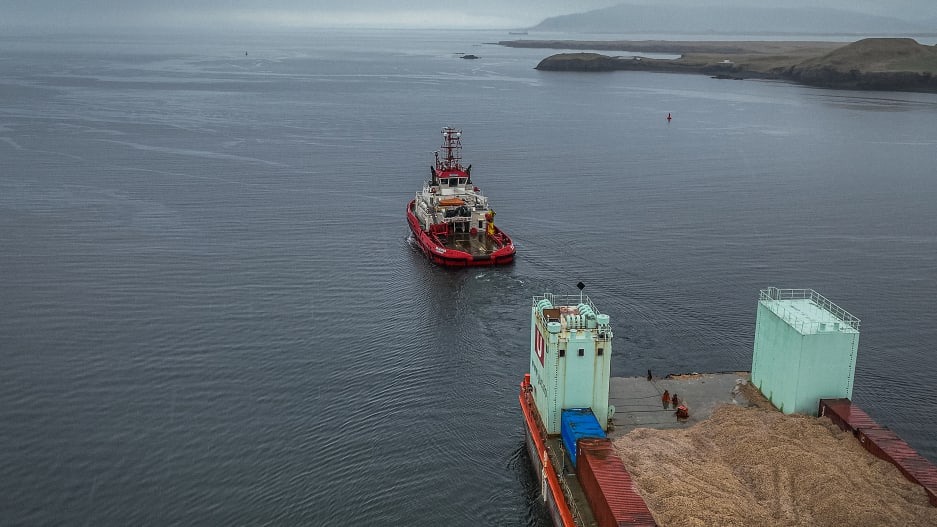
On a chilly day in the middle of May, a boat sailed from a port on the west coast of Iceland towing unusual cargo: a raft filled with millions of tiny wooden buoys, each no larger than a golf ball. Nearly 200 miles off the coast, the crew started to drop the buoys into the water.
The expedition was a pilot test for Running Tide, a climate tech startup that plans to later use similar floating “carbon buoys” to grow seaweed in the open ocean—and then sink both the buoys and the seaweed to the bottom of the ocean to store the carbon that they contain. The test of the buoys in May, like others that followed in June and July, was designed to “get us to the starting line of actually being able to run a negative emissions supply chain,” says Running Tide CEO Marty Odlin, meaning that it will sell carbon removal services to customers that want to offset their own emissions.
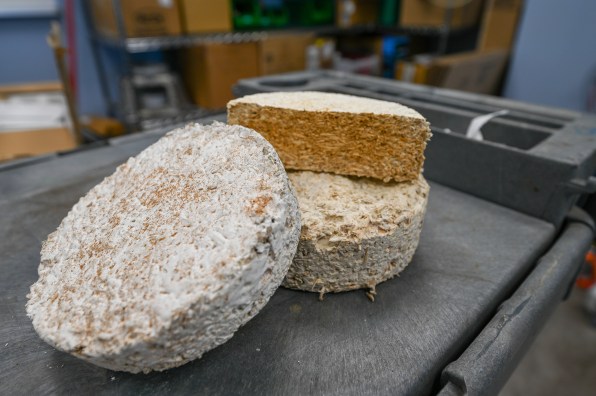
The buoys are made from chunks of wood waste from the forestry industry (what the industry calls “residue”) that might have otherwise been burned, releasing the carbon that the trees had captured as they grew. They’re also coated with limestone, which helps capture more carbon and fight ocean acidification when it dissolves in the water.
When the buoys are released, a fleet of sensors tracks where they travel; cameras in cages float along with the buoys and can later be recovered from the water. In the first pilot, a storm hit shortly after the buoys were deployed, with six-foot waves quickly pushing them north and east. The buoys floated for around two weeks, and then sank into the deep ocean. On the ocean floor, they’ll be consumed by ocean creatures (some deep-sea scavengers, like these shrimp-like animals, like to eat wood) or buried in sediment. The process can store carbon for hundreds of millions of years.
If the buoys float long enough, they can support seaweed as it grows. By tweaking the way that the buoys are made—their density and size, how dry the wood is, and how much it’s coated—it’s possible to control roughly how long they float. (It’s also possible to control to some extent where they’ll travel by placing them in a certain location based on ocean currents, wind, and waves.) At first, the team wanted to sink the buoys relatively quickly for the purposes of its tests. In some subsequent tests, the buoys floated for as long as a month.

The team is separately testing how seaweed grows in the open ocean. Sea lettuce, for example, can grow in as little as two weeks. When one of the wood buoys is sprayed with seaweed spores and placed in the water, it grows a layer of green fuzz, looking a little like a small tennis ball. Since algae quickly captures carbon as it grows, it’s another way to bring more carbon from the atmosphere to be stored on the ocean floor.
The final system has multiple parts, but the team is following Gall’s law—the idea that building a complex system should start with a simpler pieces. “You build a simple version, make it work, and then you slowly add complexity and sophistication to the system over time,” says Odlin. The first step is to understand how the wooden buoys perform before they’re used in the final system. They’re also working with scientists to study any potential impacts of growing algae in the open ocean—where it normally wouldn’t grow—before deploying seaweed at a large scale.
Even without the seaweed, the carbon buoys have a positive climate impact. The first deployment, with more than 500 metric tons of the limestone-coated buoys, removed 275 tons of CO2 from the atmosphere. Shopify, the e-commerce company, paid for the “carbon removal” services.
Shopify became the startup’s first customer in 2020, before Running Tide had started operating, in order to help it launch; the tech company runs a Sustainability Fund that supports climate entrepreneurs, and saw the potential in Running Tide’s unique approach.
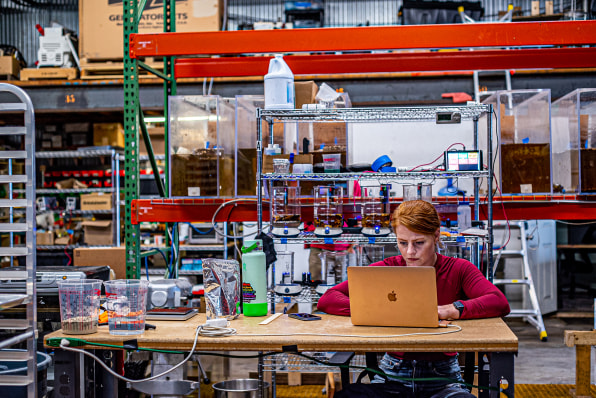
“We are excited by carbon removal solutions that can leverage the world’s largest natural carbon sink, the ocean, because of the ocean’s massive capacity to store carbon and the fact that ocean solutions don’t compete with arable land,” says Shopify sustainability director Stacy Kauk. The company searches for ways to remove carbon that are long-lasting, low-cost, verifiable, safe, and that have the potential to happen at a massive scale.
“Ultimately, what I hope is that we’re able to do multiple gigatons per year of carbon removal with our system—billions of tonnes,” Odlin says. That’s still a very long way off, though Odlin argues that, because the system doesn’t require new infrastructure, it will be able to grow quickly when the startup is ready. The motivation to scale up fast is obvious. “We want to rebalance the Earth’s carbon cycle so that we can stop the damage to the natural world that we’re seeing unfold in real time,” he says.












